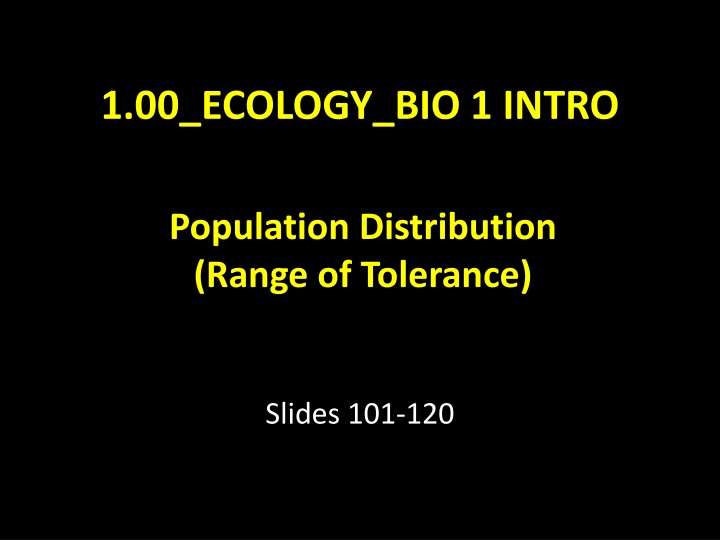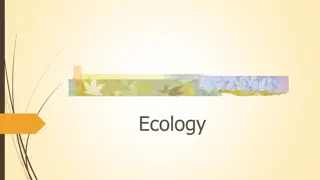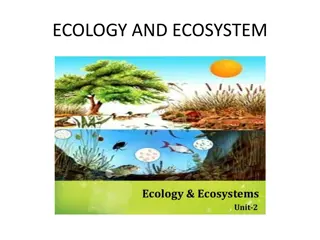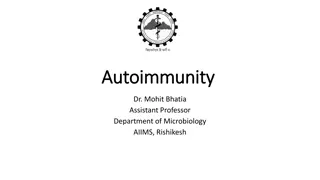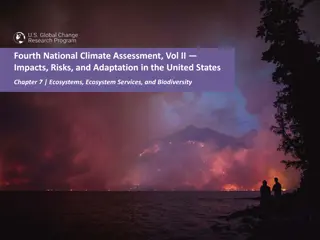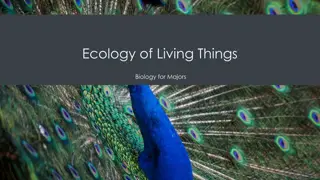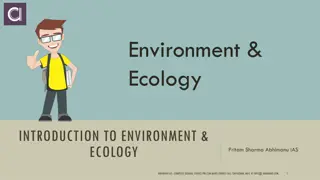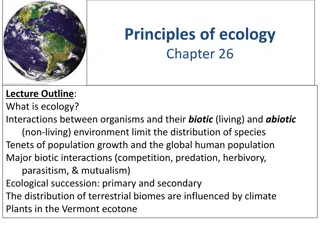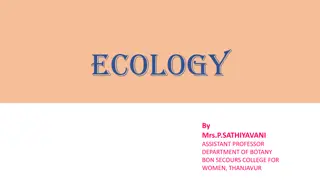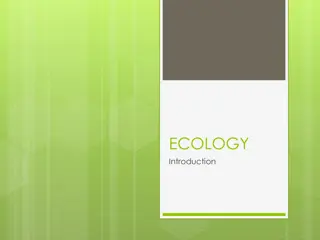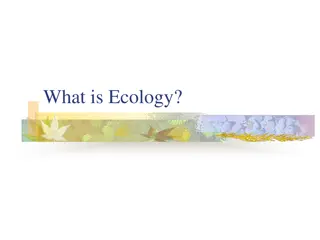Species Tolerance Ranges in Ecology
Species distributions are driven by tolerance limits for environmental factors. Tolerance limits and optimum ranges exist for critical factors, impacting species distribution and abundance. The law of tolerance dictates that each organism has a range of tolerances within which survival is possible. A wider tolerance range indicates wider dispersion of the species. Biological characteristics enable organisms to survive and reproduce within their optimum tolerance range.
Uploaded on Feb 26, 2025 | 0 Views
Download Presentation

Please find below an Image/Link to download the presentation.
The content on the website is provided AS IS for your information and personal use only. It may not be sold, licensed, or shared on other websites without obtaining consent from the author.If you encounter any issues during the download, it is possible that the publisher has removed the file from their server.
You are allowed to download the files provided on this website for personal or commercial use, subject to the condition that they are used lawfully. All files are the property of their respective owners.
The content on the website is provided AS IS for your information and personal use only. It may not be sold, licensed, or shared on other websites without obtaining consent from the author.
E N D
Presentation Transcript
1.00_ECOLOGY_BIO 1 INTRO Population Distribution (Range of Tolerance) Slides 101-120
What drives species distributions? All species have tolerance limits for environmental factors beyond which individuals cannot survive, grow, or reproduce
Tolerance Limits and Optimum Range Tolerance Limits Environmental Gradient Tolerance limits exist for all important environmental factors
Range of Tolerance Organisms have ranges of tolerance for environmental factors. The range will be the high and low extremes of tolerance for an environmental factor. Organisms have specific requirements for successful growth, development and reproduction. Example: There may be a coldest temperature and hottest temperature an animal can survive in their environment. That is their range of tolerance.
Critical factors and Tolerance Limits For some species, one factor may be most important in regulating a species distribution and abundance. Usually, many factors interact to limit species distribution.
Law of Tolerance An organism s ability to survive variation in environmental conditions is called its Tolerance. The law of tolerance states that: For each abiotic factor, an organism has a range of tolerances within which it can survive. Toward the upper and lower extremes of this tolerance range, that abiotic factor tends to limit the organism s ability to survive.
Law of Tolerance The wider the tolerance range of a species, the more widely dispersed the organism is likely to be. Each species will have an optimum tolerance range within which the species will be most abundant. Outside of this optimum range, organism s may experience physiological stress. These are inherited characteristics which enable an organism to survive and reproduce in a particular habitat.
Tolerance Every species has its own range of tolerance, the ability to survive and reproduce under a range of environmental circumstances. Tolerance ranges of species
Tolerance Organisms have an upper and lower limit of tolerance for every environmental factor. Beyond those limits, the organism cannot survive.
Tolerance When an environmental condition, such as temperature, extends in either direction beyond an organism s optimum range, the organism experiences stress. The organism must expend more energy to maintain homeostasis, and so has less energy left for growth and reproduction.
Range of Tolerance http://www.youtube.com/watch?v=Q6ENLe4W_K0
Shelfords Law of Tolerance Organisms have an ecological maximum and minimum, with a range in between which represents the limits of tolerance . Too Much or Too Little!
Range of Tolerance Every population thrives in an optimal range of abiotic factors. Beyond this range, one finds less and less numbers of these organisms. In an ecosystem, it is harder to represent what this optimal range is, since a host of factors affect the survivability of this population. Often, the range is shown for each factor, and this is known as the range of tolerance.
Too dry Too wet Just right
Just Right Too Cold! Too Hot!
